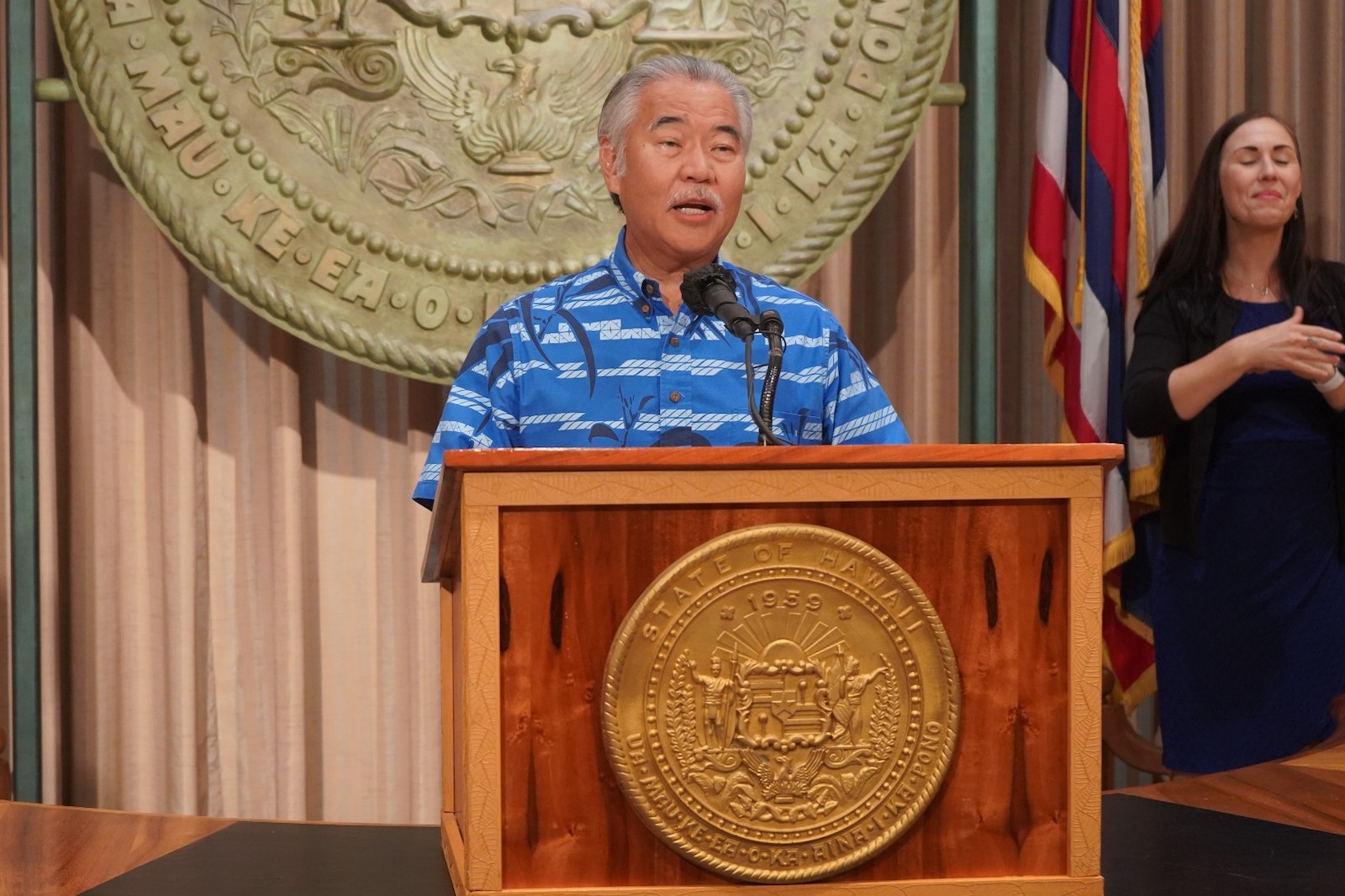The debate over renewable energy projects in the state with the most expensive electricity bills in the country has landed on the desk of Governor David Ige in Hawaii.
While the governor has until July 12 to make a final decision on whether to veto a controversial renewable energy bill passed by the Hawaii state legislature, he has already indicated he will do so.
The measure requires that each island generate one third of its renewable energy from “firm” sources, which provide power 24 hours a day, before building any more renewables. Critics argue that the bill would make it harder for Hawaii to reach its climate goals and raise the cost of electricity — which is nearly three times more expensive in Hawaii than the national average.
“We shouldn’t waste our time on this kind of legislation if we hope to exist in a clean energy future,” Ige said during a recent press conference indicating his intent to veto the bill.
In 2015, Hawaii became the first state in the nation to commit to generating 100 percent of its electricity from renewable sources by 2045. The state has made significant progress; last year, Hawaii’s primary electric utility generated nearly 40% of its electricity from renewables.
But Senator Donovan Dela Cruz, a state lawmaker from Oahu, has pushed the idea that a share of the state’s renewable energy must come from “firm” sources. In a recent editorial, he voiced concerns about intermittency, writing, “In Hawaii’s unique environment, wind and solar are clearly vital, but even here, they can’t guarantee power on demand 24/7/365.” In January, he introduced legislation, and after much wrangling, his bill passed in May.
Environmentalists and clean energy advocates were incensed. “Firm” sources of renewable energy include geothermal and hydro, but also biomass, renewable biodiesel, and renewable natural gas, which are technically renewable, but still generate large amounts of pollution and greenhouse gas emissions. If the bill were to be signed into law, several of the Hawaiian Islands would be out of compliance immediately, meaning they would be forced to stop installing new wind and solar projects until they could generate more renewable energy from “firm” sources.
For example, the legislation would likely stop a solar-plus-battery storage project on Lanai, which could allow the island to generate a total of 98 percent of its electricity from renewables and lower utility bills. It would also likely give new life to a wood-burning power plant on the Big Island, which has been the subject of a long regulatory fight.
Jeff Kaemmerlen, CEO of the solar company Sunspear, wrote that the bill would “limit our ability to fight climate change and inflict massive damage on the solar and renewable energy industry, raise costs for all ratepayers and residents, and put the State’s renewable energy, resilience, and economic recovery goals in jeopardy.”
Wayne Tanaka, Director of the Hawaii Sierra Club, told PV Magazine that the bill is “a threat to Hawaii’s clean energy future and will slow down our transition away from fossil fuels at the very time that we need to accelerate renewable energy adoption.”
On June 8, hundreds of environmentalists and solar industry workers rallied at the state Capitol, calling on Ige to veto the bill. Ige said he also received 1,600 letters and emails in opposition.
On June 27, the governor announced his intent to veto the bill, citing concerns that it would prevent Hawaii from reaching its clean energy goals by 2045. Ige has until next week to make a final decision, but a veto seems all but certain. During the press conference, Ige was unambiguous. “This bill is not in the people’s best interest,” he said.



